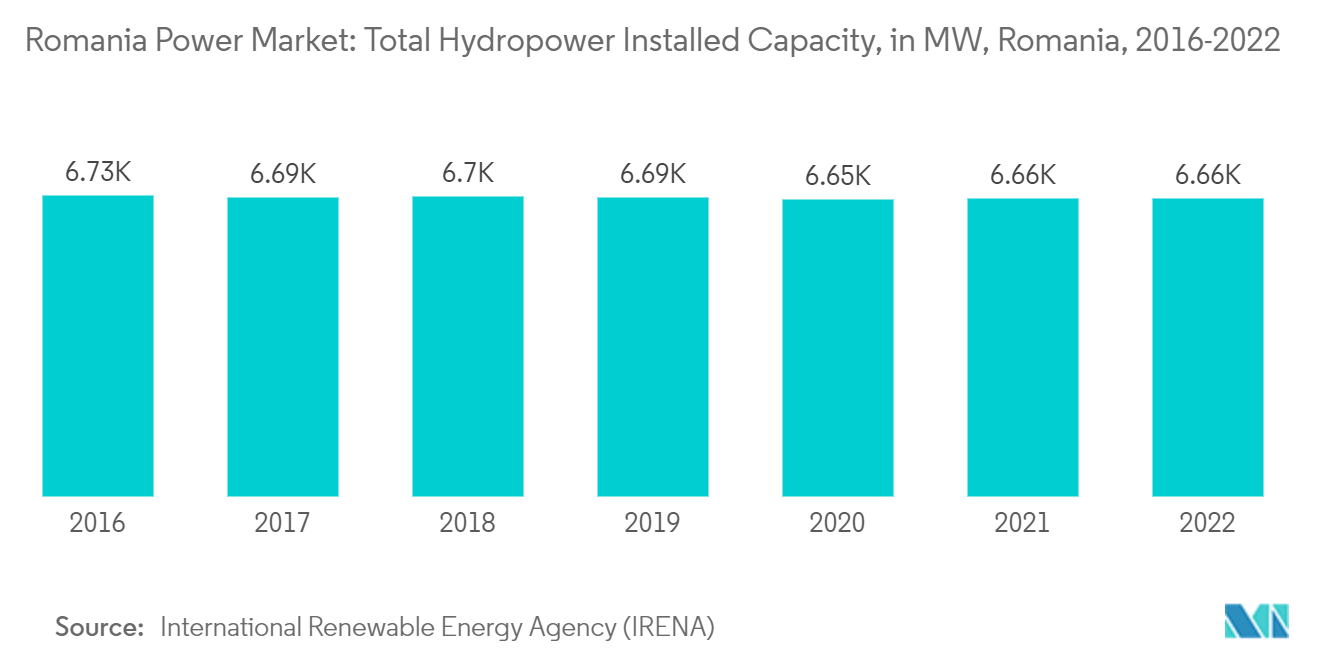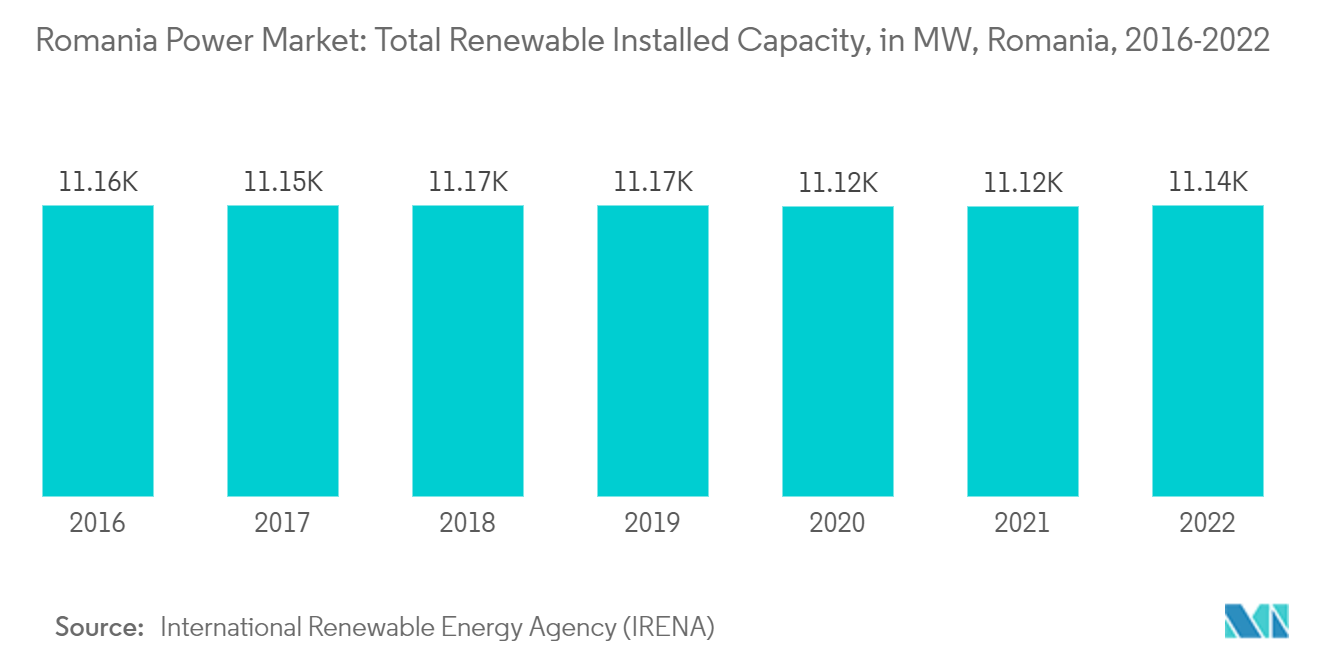Market Trends of Romania Power Industry
Hydropower to Witness Significant Growth
- Romania's energy mix is dominated by hydrocarbon energy sources such as coal, oil, and natural gas. This scenario is changing fast with the growth of hydropower and solar energy.
- Hydropower is the largest source of renewable energy in Romania. Romania has great potential for more than 9GW, but as of 2022, only 70% of the total hydropower capacity was utilized. Hence, the country has the potential to explore more areas to capture hydroelectric power.
- Romania is seeking to derive more of its energy needs from renewable sources. Romania is seen as a fast-growing market for hydropower in the Southeast European region.
- According to the International Renewable Energy Agency (IRENA) Renewable Energy Statistics 2023, the total capacity of hydropower energy sources, as of 2022, was 6,661 megawatts (MW). This is expected to grow significantly with upcoming projects during the forecast period.
- In January 2023, Romania and Bulgaria agreed to develop two Danube hydropower projects. Hidroelectrica, a Romanian state-owned firm, will be the principal contractor for both Danube projects. The two hydropower plants are expected to take five to six years to build. The first power plant will be between Romania's Turnu Măgurele and Bulgaria's Nikopol. It will have an 840 MW capacity.
- Thus, owing to the above points, the hydropower segment is expected to witness significant growth during the forecast period.

Supportive Renewable Energy Policies to Drive the Market
- Romania has announced numerous policies to support the renewable energy sector. These policies help meet the obligations set by the European Union (EU) in terms of greenhouse gas emissions through its legislative package.
- Romania’s Integrated National Plan in the field of Energy and Climate Change (PNIESC) proposes 5.1 GWh of solar and 5.3 GWh of wind capacities by 2030 and increasing the number of energy prosumers.
- Under CfD, the producers enter a private contract with the nominated counterparty, under which the parties agree on a strike price. The producer sells the electricity at market prices. If the market prices are below the strike price, then the counterparty pays the difference to the producer, and if the market price is above the strike price, the producer pays the difference to the counterparty.
- The CfD ensures a consistent electricity price to power plant owners, protecting them from market risks associated with electricity price volatility. Given the success of the CfD in the United Kingdom and the existing obstacles presented by uncertain electricity prices for the power market, CfD is expected to be a major market driver.
- According to the International Renewable Energy Agency (IRENA) Renewable Energy Statistics 2023, the total capacity of renewable energy sources, as of 2022, was 11,1411 megawatts (MW). This is expected to grow significantly with supportive government policies and upcoming projects during the forecast period.
- Therefore, the above supportive renewable policies are expected to drive the Romanian power market in the forecast period.

